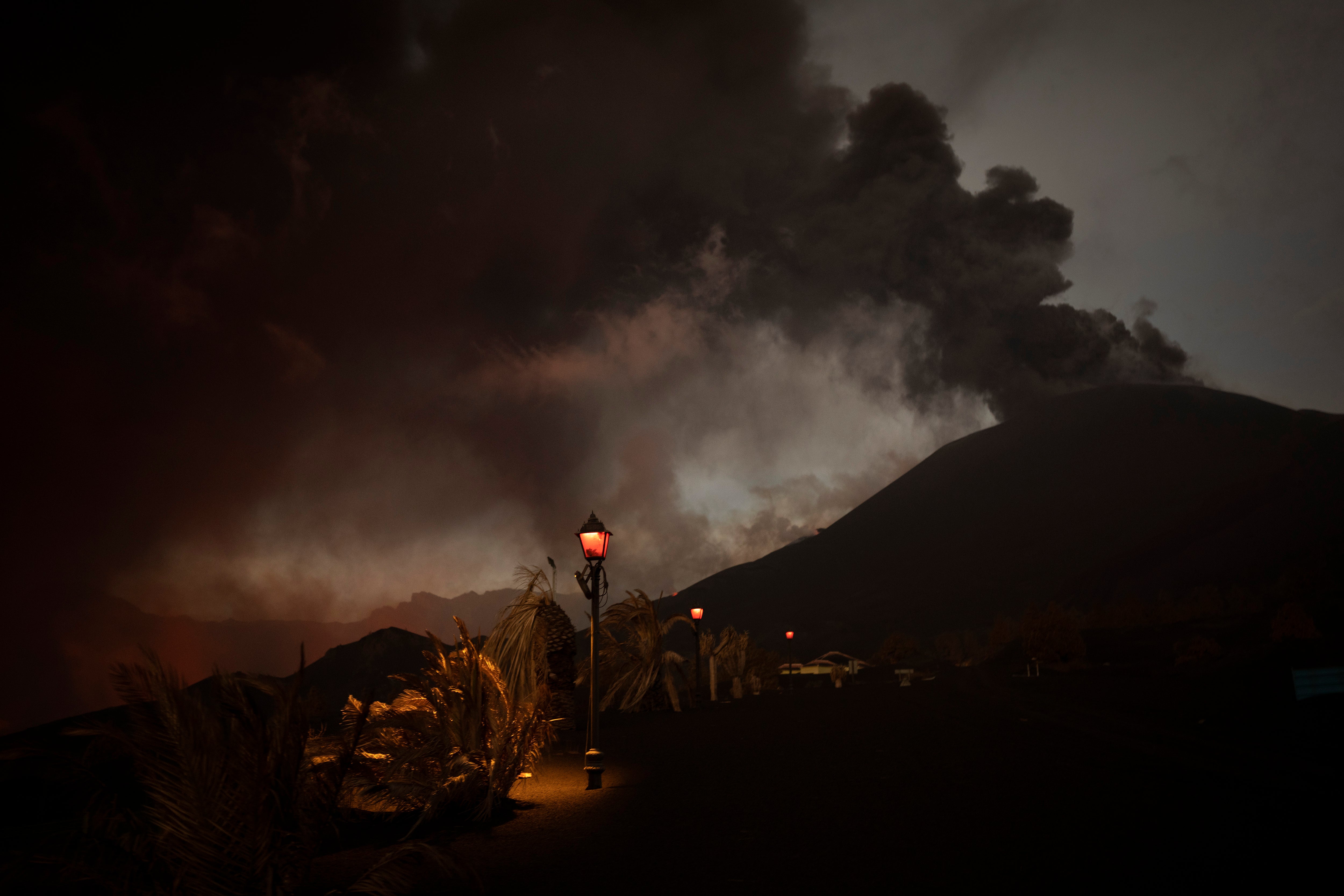After 3 tense months, Spanish volcano eruption may be over
Residents on the Spanish island of La Palma are daring to hope that a volcanic eruption is over after almost three months

Your support helps us to tell the story
From reproductive rights to climate change to Big Tech, The Independent is on the ground when the story is developing. Whether it's investigating the financials of Elon Musk's pro-Trump PAC or producing our latest documentary, 'The A Word', which shines a light on the American women fighting for reproductive rights, we know how important it is to parse out the facts from the messaging.
At such a critical moment in US history, we need reporters on the ground. Your donation allows us to keep sending journalists to speak to both sides of the story.
The Independent is trusted by Americans across the entire political spectrum. And unlike many other quality news outlets, we choose not to lock Americans out of our reporting and analysis with paywalls. We believe quality journalism should be available to everyone, paid for by those who can afford it.
Your support makes all the difference.Residents on the Spanish island of La Palma dared to hope Wednesday that a volcanic eruption is over after almost three months of unnerving daily explosions, earthquakes, rivers of molten rock and a huge ash plume containing toxic gases.
The Cumbre Vieja volcano in the Canary Islands off northwest Africa fell silent on Monday evening, and scientists said its 36 hours or so of negligible activity might signal the beginning of the end of the eruption.
Scientists won’t rule out a resurgence of volcanic activity, which previously abated only to return with renewed force, but say it is unlikely.
“We cannot be 100% sure, as the volcano has been playing a few tricks over the last weeks,” Valentin Troll, a geology expert with Sweden’s Uppsala University and co-author of a geology study of the Canary Islands, told The Associated Press.
“But many parameters have now subsided, and I think the volcano is indeed in decline now,” he said.
The Canary Islands government said in a statement that “volcanic activity has fallen to almost nothing.”
The eruption, which began Sept. 19, is the longest on record on La Palma and has been a milestone for islanders, many of whom live from farming and tourism. The volcanic Canary Islands are a popular European vacation destination due to their mild climate.
No injuries or deaths have been directly linked to the eruption on La Palma, where around 80,000 people live.
While life has continued largely as normal on most of the island, a section of its southwestern side is severely damaged.
The Spanish government has pledged financial aid to help locals rebuild their lives.
Fiery molten rock flowing from Cumbre Vieja down toward the sea has destroyed around 3,000 buildings. The fields of thick, black hardened lava have entombed banana plantations, ruined irrigation systems and cut roads.
The hardened lava covers around 1,200 hectares (about 3,000 acres), according to data collated by the Canary Islands volcanic emergency unit, PEVOLCAN.
Where the molten rock has poured into the Atlantic Ocean, rocky deltas have formed over 48 hectares (120 acres), PEVOLCAN said.
___
Hatton contributed from in Lisbon, Portugal.